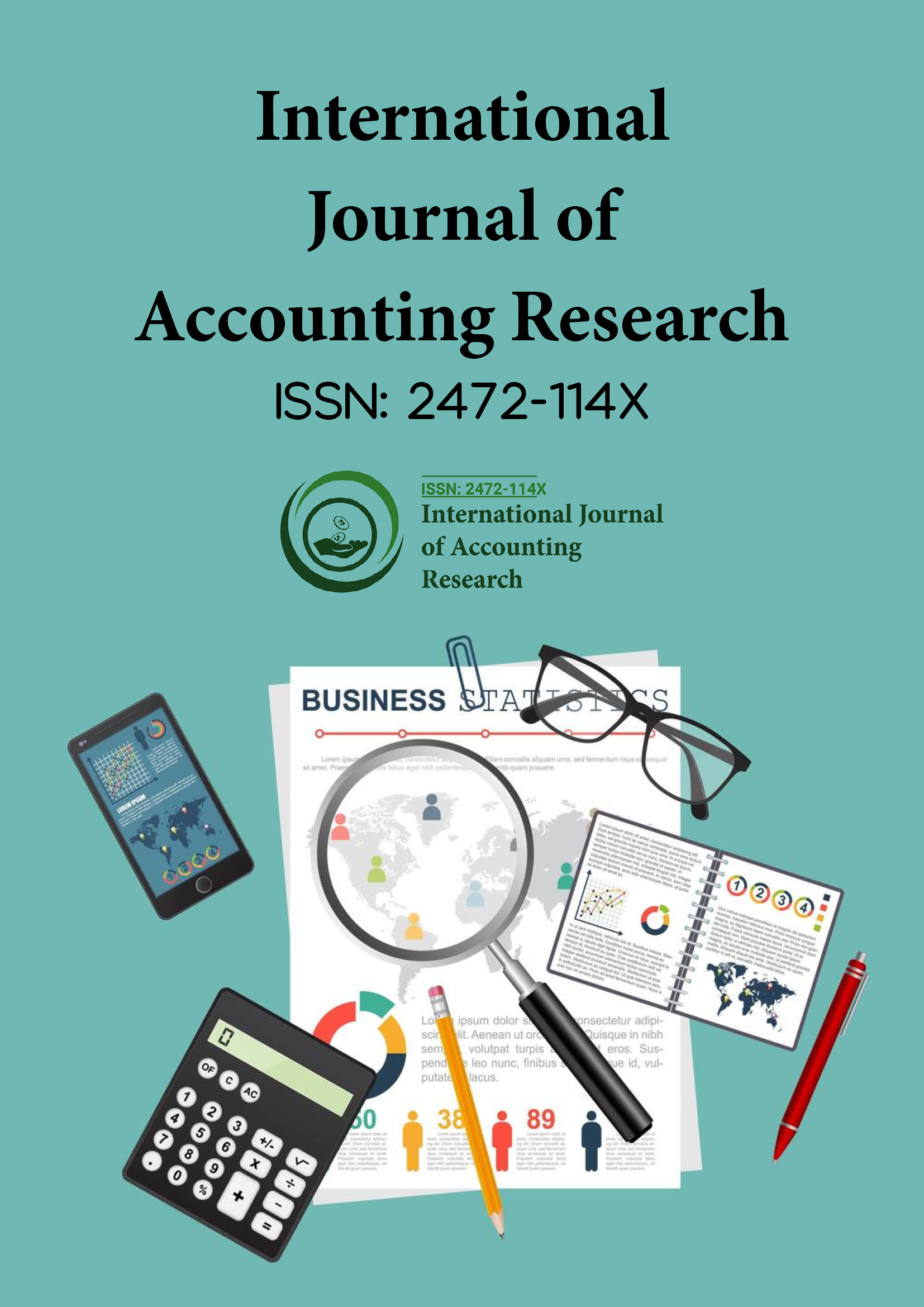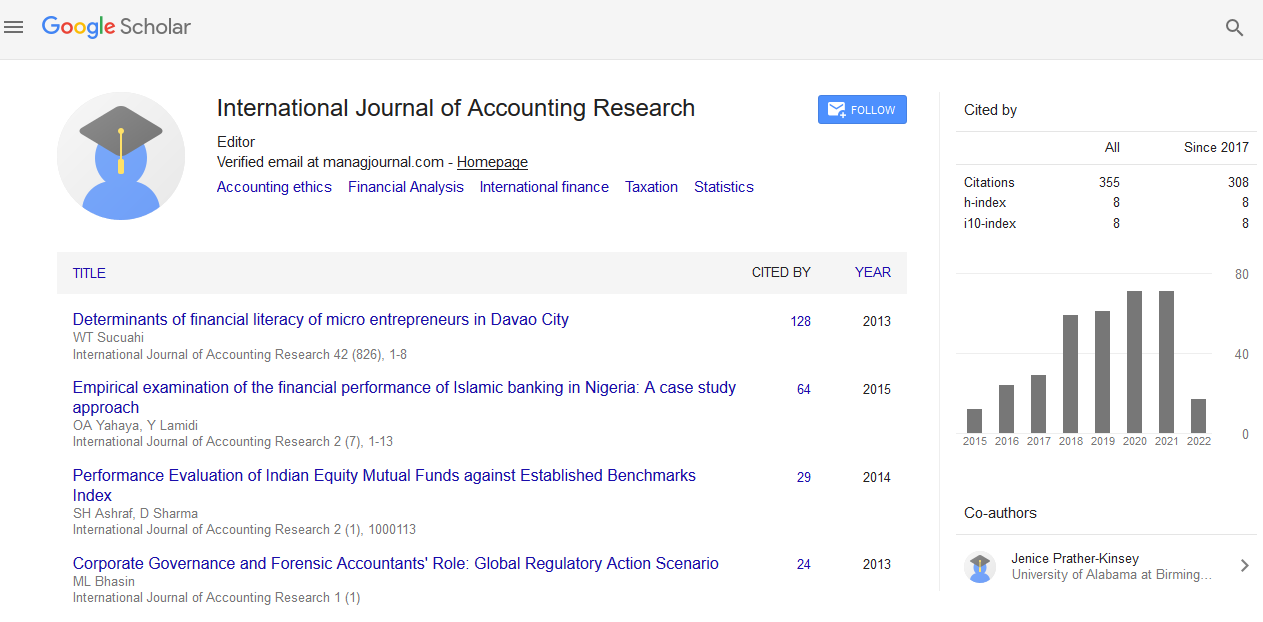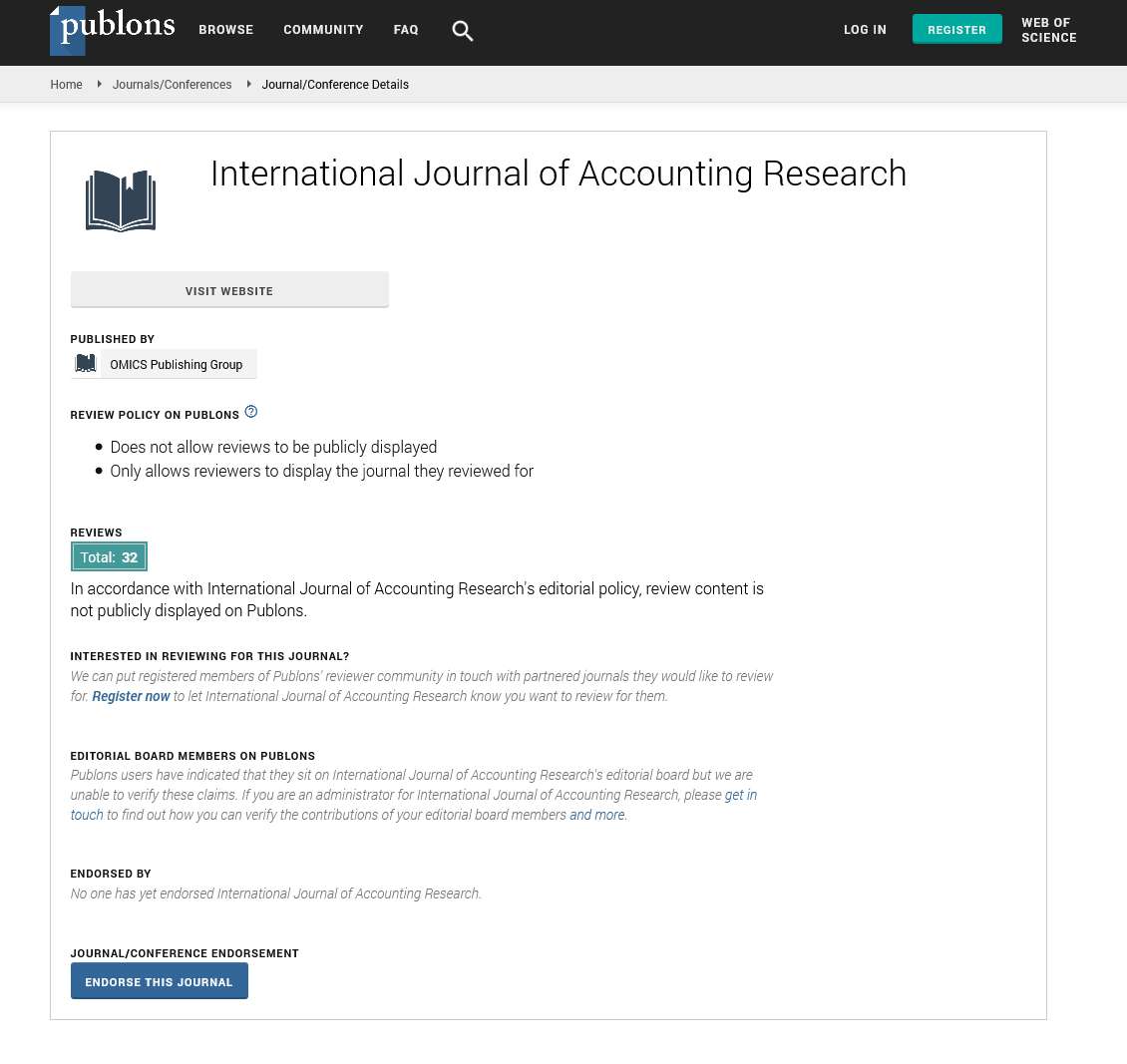Indexed In
- Open J Gate
- RefSeek
- Hamdard University
- EBSCO A-Z
- Scholarsteer
- Publons
- Euro Pub
- Google Scholar
Useful Links
Share This Page
Journal Flyer

Open Access Journals
- Agri and Aquaculture
- Biochemistry
- Bioinformatics & Systems Biology
- Business & Management
- Chemistry
- Clinical Sciences
- Engineering
- Food & Nutrition
- General Science
- Genetics & Molecular Biology
- Immunology & Microbiology
- Medical Sciences
- Neuroscience & Psychology
- Nursing & Health Care
- Pharmaceutical Sciences
Opinion Article - (2025) Volume 13, Issue 2
Financial Risk Management in Small and Medium Enterprises: Challenges and Strategies
Samuel Ortega*Received: 30-May-2025, Manuscript No. IJAR-25-29573; Editor assigned: 02-Jun-2025, Pre QC No. IJAR-25-29573 (PQ); Reviewed: 16-Jun-2025, QC No. IJAR-25-29573; Revised: 23-Jun-2025, Manuscript No. IJAR-25-29573 (R); Published: 30-Jun-2025, DOI: 10.35248/2472-114X.25.13.423
Description
Blockchain technology, originally developed as the foundation for cryptocurrencies, has gained recognition across multiple industries for its potential to enhance security, transparency, and efficiency. In the domain of taxation and public finance, blockchain offers unique opportunities to improve accountability and reduce corruption. Governments worldwide struggle with issues such as tax evasion, fraudulent claims, and lack of trust in revenue collection systems. By leveraging blockchain’s distributed ledger technology, authorities can ensure tamper-proof records, increase compliance, and foster trust between taxpayers and regulators. However, despite these advantages, challenges related to scalability, regulatory acceptance, and privacy continue to shape its adoption [1-3].
Taxation has always been vulnerable to manipulation. Individuals and corporations often exploit loopholes, conceal income, or underreport transactions to reduce their tax liabilities. Traditional auditing mechanisms, while effective to a degree, face limitations due to resource constraints and reliance on centralized data storage. Blockchain offers an alternative by decentralizing record-keeping and creating immutable transaction logs. Every financial transaction recorded on a blockchain is time-stamped and verifiable, making it nearly impossible to alter without detection. This capability can discourage fraudulent reporting and provide auditors with a reliable source of truth [4-6].
For instance, blockchain-enabled systems could automatically record business transactions in real time, ensuring that sales, expenses, and income are accurately reported. Tax authorities could then access this distributed ledger to verify declarations, eliminating the need for extensive manual auditing. Furthermore, smart contracts—self-executing agreements coded onto the blockchain—can automate tax payments. For example, Value-Added Tax (VAT) could be collected instantly at the point of sale and transferred directly to government accounts, reducing opportunities for evasion and improving cash flow.
Another important application of blockchain lies in enhancing transparency in government spending. Citizens often question how public funds are utilized, leading to skepticism about corruption and mismanagement. A blockchain-based system for public finance could provide real-time tracking of how tax revenue is allocated and spent. For example, when funds are earmarked for infrastructure projects, every disbursement and payment could be logged on the blockchain, creating an accessible trail that cannot be tampered with. This increased visibility would not only reduce corruption but also enhance citizen trust in governance [7].
Despite its potential, blockchain adoption in taxation faces several hurdles. Scalability is a major concern, as tax systems must process millions of transactions daily. Current blockchain infrastructures, while improving, may struggle to handle such volumes efficiently without compromising speed or cost. Regulatory acceptance is another challenge. Governments are cautious about implementing technologies associated with cryptocurrencies, fearing instability and lack of control. Clear legal frameworks must be established to integrate blockchain with existing tax codes, accounting standards, and data protection laws.
Privacy concerns are also significant. While blockchain ensures transparency, exposing sensitive financial information of individuals and businesses could create risks. Solutions such as permissioned blockchains, where only authorized parties can access detailed transaction data, may address this issue. Additionally, combining blockchain with advanced encryption techniques could strike a balance between transparency and confidentiality [8]. Adopting blockchain in taxation also requires cultural change. Both tax authorities and taxpayers must adapt to new systems and processes. This demands training, public education, and collaboration between technology providers, accountants, and policymakers. Without proper awareness and trust, blockchain systems may face resistance or fail to achieve desired outcomes [9, 10].
Citation: O’Connor M (2025). Financial Risk Management in Small and Medium Enterprises: Challenges and Strategies. Int J Account Res.13:424.
Copyright: © 2025 O’Connor M. This is an open access article distributed under the terms of the Creative Commons Attribution License, which permits unrestricted use, distribution, and reproduction in any medium, provided the original author and source are credited.


